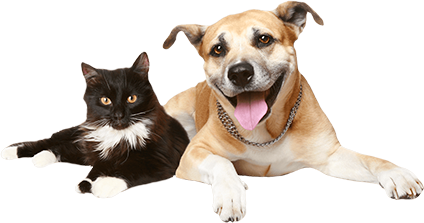Sodium Bentonite and Crystalline Silica Dust – that’s the big deal!
Clumping cat litters hold great appeal for cat-lovers because they are so convenient. However many pet-owners don’t realize these two ingredients in most clumping cat litters have been implicated in diseases and even deaths in animals and humans.
Sodium bentonite is often added as a clumping agent to traditional cat litters to create “scoopable” clay litters like Tidy Cats. Sodium bentonite acts like an expandable cement, which is why these litters should not be flushed – they swell to 15 to 18 times their dry size. It is also used in grouting, sealing, and plugging materials.
Cats often lick themselves after using the litter box, ingesting pieces of the litter, which expands just as it does in the plumbing. Also, the dust from such litters can coat cats’ lungs, leading to respiratory problems. The HennepinCenter for Poison Control in Minnesota has reported instances of poisoning in humans from chronic ingestion of sodium bentonite, so just imagine what effect it can have on our kitties who breathe it multiple times a day!
Crystalline silica dust, the other ingredient in most clumping litters, is a known carcinogen for both humans and household pets when inhaled. According to OSHA.gov, “Crystalline silica has been classified as a human lung carcinogen. Additionally, breathing crystalline silica dust can cause silicosis, which in severe cases can be disabling, or even fatal. The silica dust enters the lungs and causes the formation of scar tissue, thus reducing the lungs’ ability to take in oxygen.”
Clumping clay kitty litters may be related to a wide variety of seemingly unrelated cat health problems, included diarrhea, frothy yellow vomiting, mega-bowel syndrome, irritable bowel syndrome, kidney problems, respiratory problems, general failure to thrive, anemia, lethargy, and even death.
How does clumping litter affect our pets?
Oh, and if you care about the environment, read on….. Clay is strip mined for use in cat litters. This not only damages the environment in the same way any strip mining does, but clay is also not biodegradable. Natural cat litters are made from materials such as wheat, corn, walnut shells, pine and recycled newspaper. All are by-products of products we already use and are biodegradable.
Our advice: switch your cat litter to one made from a plant-based material – it’s better for your pet, for you, and for the environment. Some options for all-natural, healthier cat litter products sold at PetMAC are listed below. All are clumping and scoopable.
Naturally Fresh by Blue – made from walnut shells (ask about their Frequent Buyer Program!)
http://www.bluebuffalo.com/healthy-home/blue-naturally-fresh-cat-litter
Nature’s Miracle – made from corn cob
http://www.natures-miracle.com/products/cat-litter-boxes/natural-care-dust-free-corn-cat-litter.aspx
World’s Best Cat Litter – made from corn kernels (ask about their Frequent Buyer Program!)
http://www.worldsbestcatlitter.com/
Swheat Scoop – made from wheat
http://www.swheatscoop.com/
Feline Fresh – made from pine
http://www.planetwiseproducts.com/feline.htm
Dr. Elsey’s Litter Attractant – the herbal ingredient in Cat Attract – can be used with other non or low-scented litters
http://www.preciouscat.com/product/ultra-litter-attractant/
Dr. Elsey’s Cat Attract – while it is a traditional clumping litter, it has been very beneficial for cats who have litterbox issues and is 99% dust free
http://www.preciouscat.com/product/cat-attract/
Dr. Elsey’s Precious Cat – a traditional clay litter I brought in by request…. At least it has less silica dust than grocery store cat litters
http://www.preciouscat.com/product/classic/
Lorem Ipsum is simply dummy text of the printing and typesetting industry. Lorem Ipsum has been the industry’s standard dummy text ever since
